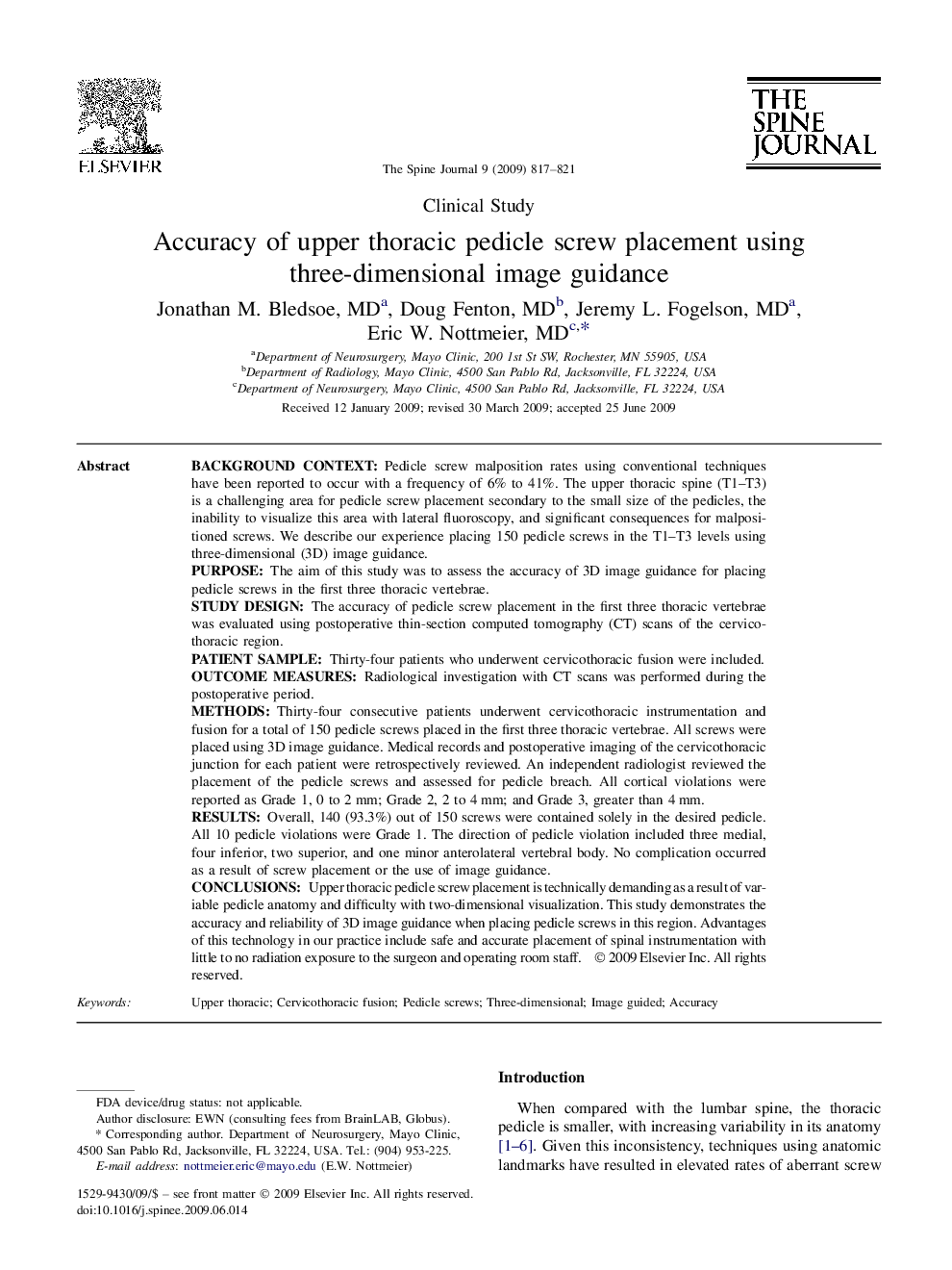| Article ID | Journal | Published Year | Pages | File Type |
|---|---|---|---|---|
| 4099733 | The Spine Journal | 2009 | 5 Pages |
Background contextPedicle screw malposition rates using conventional techniques have been reported to occur with a frequency of 6% to 41%. The upper thoracic spine (T1–T3) is a challenging area for pedicle screw placement secondary to the small size of the pedicles, the inability to visualize this area with lateral fluoroscopy, and significant consequences for malpositioned screws. We describe our experience placing 150 pedicle screws in the T1–T3 levels using three-dimensional (3D) image guidance.PurposeThe aim of this study was to assess the accuracy of 3D image guidance for placing pedicle screws in the first three thoracic vertebrae.Study designThe accuracy of pedicle screw placement in the first three thoracic vertebrae was evaluated using postoperative thin-section computed tomography (CT) scans of the cervicothoracic region.Patient sampleThirty-four patients who underwent cervicothoracic fusion were included.Outcome measuresRadiological investigation with CT scans was performed during the postoperative period.MethodsThirty-four consecutive patients underwent cervicothoracic instrumentation and fusion for a total of 150 pedicle screws placed in the first three thoracic vertebrae. All screws were placed using 3D image guidance. Medical records and postoperative imaging of the cervicothoracic junction for each patient were retrospectively reviewed. An independent radiologist reviewed the placement of the pedicle screws and assessed for pedicle breach. All cortical violations were reported as Grade 1, 0 to 2 mm; Grade 2, 2 to 4 mm; and Grade 3, greater than 4 mm.ResultsOverall, 140 (93.3%) out of 150 screws were contained solely in the desired pedicle. All 10 pedicle violations were Grade 1. The direction of pedicle violation included three medial, four inferior, two superior, and one minor anterolateral vertebral body. No complication occurred as a result of screw placement or the use of image guidance.ConclusionsUpper thoracic pedicle screw placement is technically demanding as a result of variable pedicle anatomy and difficulty with two-dimensional visualization. This study demonstrates the accuracy and reliability of 3D image guidance when placing pedicle screws in this region. Advantages of this technology in our practice include safe and accurate placement of spinal instrumentation with little to no radiation exposure to the surgeon and operating room staff.
